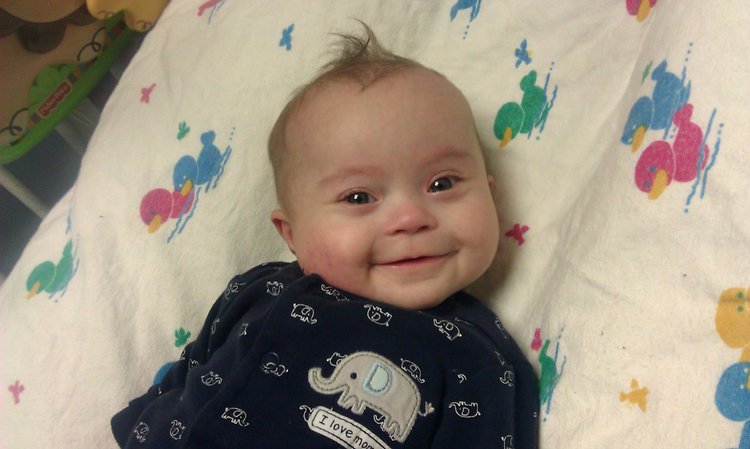Unless you’ve dealt with it in your family, you may have never heard of torticollis. But, if your baby is experiencing torticollis, you are probably concerned and even a little frightened. Don’t worry! Infant torticollis is more common than you think, and early treatment is extremely effective. The important thing is to have an expert see your baby as soon as you suspect torticollis may be an issue.
What is Torticollis?
Infant torticollis is a condition in which a baby’s neck is twisted so that the head and chin are tilted in the opposite direction of the neck. Here are a few other things parents should know about the condition:
-
Torticollis is common. According to BabyCenter.com, about one in 250 infants are born with torticollis. The condition is believed to be caused either by a baby’s abnormal positioning while they are in utero or by tools used in delivery. The SCM muscle, which connects the skull to the collarbone and breastbone, undergoes pressure on one side and has spasms that prevent the muscle from properly functioning.
-
Torticollis can be detected early. In most cases, parents will notice torticollis symptoms within two to three weeks after birth, as they see their little one tilting their head to one side and experiencing limited head motility. A pediatrician will usually be on the lookout for torticollis and will begin treating it soon after diagnosis to prevent permanent damage.
-
There are two types of torticollis. Torticollis that’s present at or before birth, and which is often accompanied by slight irregularities or asymmetries in facial features, is known as congenital torticollis. Torticollis that happens as a result of habits or environmental factors after birth is called acquired torticollis.
-
Torticollis is treatable. The good news is the condition is easily treatable once detected, with treatment plans varying depending on the type of torticollis.
Symptoms of Torticollis
Torticollis shows up very early in development. Look for these signs and symptoms within the first few weeks of a baby’s life:
-
Baby’s head tilts to one side. Moms may notice that their little one tilts his or her head to one side. This is probably the most prominent symptom, and it can be noticed as early as a couple of weeks after birth.
-
Swollen neck muscles. Swelling in the neck area or the emergence of a bump on one side of the neck is another telltale sign of torticollis in babies.
-
Baby prefers to breastfeed on one side only. A baby that is only comfortable breastfeeding on one side may be suffering from torticollis.
-
Limited neck movement. Infant torticollis can make neck movement difficult, especially during tummy time.
-
Plagiocephaly or “flat head.” The pressure on the head from the baby favoring one side of their chin and face can cause what’s known as “flat head,” which means one side of the baby’s head becomes flat or asymmetrical compared to the rest of the head.
Treating and Preventing Torticollis
While there are instances in which torticollis can’t really be prevented (for instance, if the condition is congenital), there are things parents can do to prevent torticollis, including regular exercise, tummy time and avoiding prolonged periods (no more than three hours per day) in car seats, baby swings, bassinets or anything else that may worsen muscle tightening. As far as treatment, pediatricians often recommend physical therapy to help lengthen the SCM muscle and restore full neck movement.Although the internet can be helpful, it is not a good idea to do neck stretches that you have researched before a licensed physical or occupational therapist has evaluated your baby. The therapist should be the one to educate you on these important exercises. You don’t want to do unnecessary harm to your baby’s neck.
If you suspect that your infant may be developing torticollis, early intervention is important. You’ll want to get a diagnosis from an experienced physician, and begin therapy as soon as possible to ensure the best possible outcome for your baby. Without a doubt, the therapists at Baby Begin can help! For more information about the treatment of infant torticollis, please visit our website or connect with our online community on Facebook, Twitter or LinkedIn.

